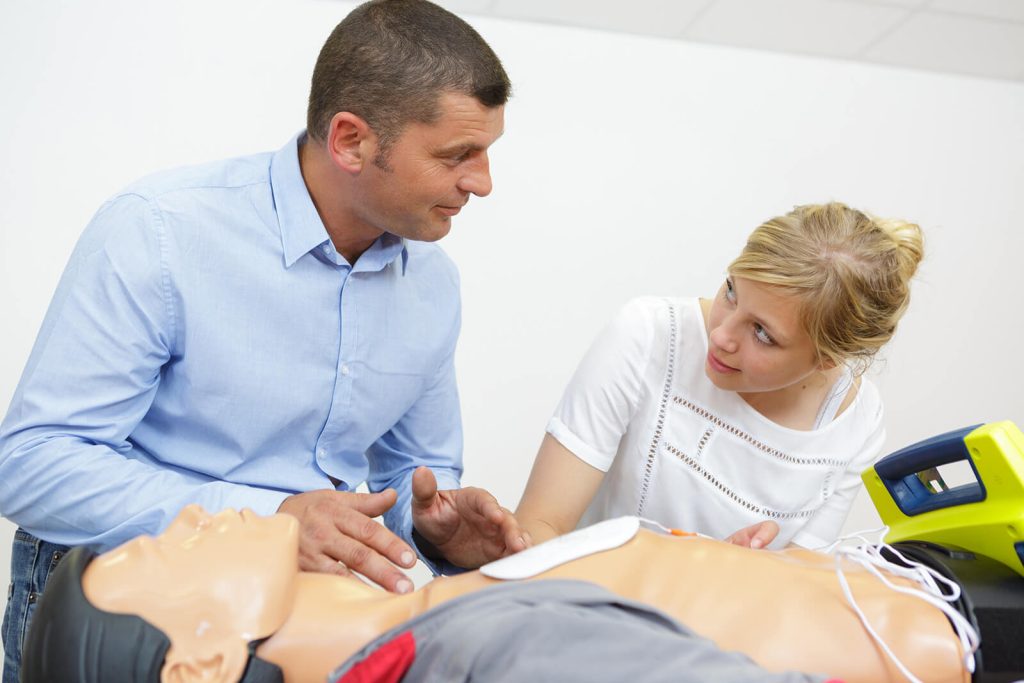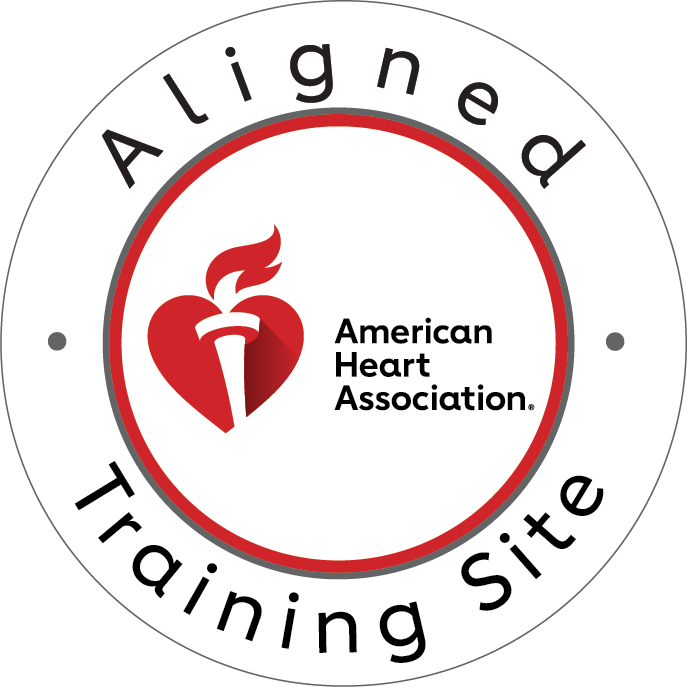When cardiac emergencies strike, every second counts. Learning how to use an AED effectively with two rescuers can dramatically increase survival rates and improve patient outcomes. This coordinated approach ensures seamless execution of life-saving procedures while maintaining the highest standards of emergency care.
Understanding the Critical Role of Two-Rescuer AED Operations
Using an AED effectively with two rescuers creates a powerful team dynamic that enhances emergency response capabilities. Unlike single-rescuer scenarios, this approach allows for simultaneous task completion, continuous monitoring, and reduced fatigue during prolonged resuscitation efforts.
The two-rescuer method significantly improves chest compression quality and minimizes interruptions. While one rescuer focuses on high-quality CPR, the second rescuer can prepare and operate the automated external defibrillator. This division of responsibilities ensures that both procedures receive proper attention without compromising either intervention.
Research consistently demonstrates that coordinated two-rescuer efforts result in shorter response times and better patient outcomes. Furthermore, having two trained individuals present reduces the likelihood of errors and provides backup support if one rescuer becomes fatigued or overwhelmed.
Essential Components for Effective Two-Rescuer AED Use
Primary Equipment Requirements
Before beginning any emergency response, ensure you have immediate access to a properly functioning AED device. Modern automated external defibrillators are designed for ease of use, but proper preparation remains crucial. Check that electrode pads are within their expiration date and that the battery indicator shows adequate power levels.
Additionally, gather essential supplies, including barrier devices for rescue breathing, gloves for protection, and scissors for clothing removal if necessary. Having these items readily available prevents delays during critical moments when using an AED effectively with two rescuers.
Establishing Clear Communication Protocols
Successful two-rescuer AED operations depend heavily on clear, consistent communication between team members. Establish who will serve as the primary rescuer (typically handling chest compressions) and who will manage the AED device. This designation should remain consistent throughout the emergency response.
The AED operator must announce each step clearly, including “charging,” “stand clear,” and “analyzing.” Meanwhile, the CPR rescuer should communicate compression quality and any changes in patient condition. This ongoing dialogue ensures both rescuers remain informed and coordinated throughout the procedure.
Step-by-Step Guide: How to Use an AED Effectively with Two Rescuers
Initial Assessment and Positioning
Begin by conducting a rapid scene safety assessment. Both rescuers should approach the patient together, with one immediately checking for responsiveness while the other retrieves the AED. The primary rescuer should position themselves at the patient’s side for optimal chest compression access.
Once unresponsiveness is confirmed, the CPR rescuer should immediately begin chest compressions while the AED operator prepares the device. This immediate action is crucial when learning how to use an AED effectively with two rescuers, as it prevents any delay in life-saving interventions.
AED Preparation and Electrode Placement
The AED operator should power on the device and follow the voice prompts while the primary rescuer continues chest compressions. Remove the patient’s clothing from the chest area, ensuring the skin is dry and clean. If the patient has excessive chest hair, it may need to be removed quickly to ensure proper electrode contact.
Place the first electrode pad on the upper right chest, below the collarbone and to the right of the breastbone. Position the second pad on the lower left chest, below and to the left of the left nipple. Ensure both pads adhere completely to the skin without air bubbles or gaps.
Coordinating CPR and AED Analysis
When the AED prompts for rhythm analysis, the CPR rescuer must immediately stop compressions and ensure no contact with the patient. The AED operator should clearly announce “analyzing, everyone clear” to prevent interference with the device’s assessment.
During analysis, both rescuers should visually confirm that nobody is touching the patient. This brief pause is essential for accurate rhythm detection and demonstrates proper technique when using an AED effectively with two rescuers.
Shock Delivery and Immediate Post-Shock Care
If a shock is advised, the AED operator should ensure the area remains clear before pressing the shock button. After shock delivery, the CPR rescuer should immediately resume chest compressions without checking for a pulse, as recommended by current guidelines.
The AED operator should monitor the device display and prepare for the next analysis cycle. This seamless transition between shock delivery and CPR resumption exemplifies effective two-rescuer coordination and maximizes the chances of successful resuscitation.
Advanced Techniques for Optimal Two-Rescuer Performance
Managing Rescuer Fatigue and Switching Roles
Extended resuscitation efforts can quickly exhaust even well-trained rescuers. Plan to switch roles every two minutes or after each AED analysis cycle. The transition should be smooth and practiced, with the incoming CPR rescuer positioning themselves opposite the current rescuer.
During role switches, maintain verbal communication to ensure continuity of care. The outgoing rescuer should briefly update their partner on compression quality and any observed changes in patient condition. This information exchange is vital for maintaining effective two-rescuer AED operations.
Handling Special Circumstances
Certain situations require modifications to standard two-rescuer AED protocols. For pediatric patients, ensure you’re using appropriate pediatric pads and energy levels. If treating infants, one rescuer should provide chest compressions using the two-finger technique while the other manages the AED.
Environmental factors may also impact your approach. In wet conditions, quickly dry the patient’s chest before electrode placement. If the patient has an implanted pacemaker or defibrillator, position pads at least one inch away from the device to prevent interference.
Training and Certification Requirements
Building Competency Through Practice
Mastering how to use an AED effectively with two rescuers requires regular training and practice. Simulation exercises should include various scenarios, from basic cardiac arrest to complex multi-patient emergencies. Practice different role assignments to ensure both rescuers can perform either function competently.
Regular skills practice helps maintain muscle memory and builds confidence during actual emergencies. Focus on smooth transitions between compressions and AED analysis, as these moments are critical for maintaining effective resuscitation efforts.
Staying Current with Guidelines
Emergency care protocols evolve based on ongoing research and clinical experience. Stay informed about updates to AED and CPR guidelines through continuing education programs. Current recommendations emphasize minimizing interruptions to chest compressions and ensuring high-quality CPR throughout the resuscitation process.
Common Mistakes to Avoid
Coordination Errors
Poor communication between rescuers can lead to dangerous situations, such as accidental contact during shock delivery or interruptions in chest compressions. Always establish clear verbal protocols and maintain constant communication throughout the emergency response.
Another frequent mistake involves inadequate electrode pad placement or poor skin contact. Take time to ensure proper positioning, even if it means a brief delay in shock delivery. Proper electrode placement is essential for effective defibrillation and patient safety.
Timing and Rhythm Issues
Rushed or poorly coordinated actions can compromise the effectiveness of two-rescuer AED operations. Avoid the temptation to hurry through steps; instead, focus on smooth, deliberate actions that maximize patient care quality.
Take Action: Enhance Your Emergency Response Skills Today
The ability to use an AED effectively with two rescuers can mean the difference between life and death in cardiac emergencies. This critical skill requires proper training, regular practice, and current certification to ensure optimal performance when it matters most.
Ready to master these life-saving techniques? CPR Cincinnati is an American Heart Association training site that offers initial certifications and renewal in BLS for Healthcare Providers, ACLS, PALS, and CPR and First Aid courses. All classes are stress-free and hands-on, providing the practical experience you need to respond confidently in emergencies.
Whether you’re seeking CPR certification in Cincinnati or need BLS certification in Cincinnati, CPR Cincinnati delivers the comprehensive training that healthcare professionals and community members trust. Our expert instructors ensure you’ll gain the knowledge and skills necessary to perform effective two-rescuer AED operations and other critical emergency procedures.
Don’t wait until an emergency strikes – contact CPR Cincinnati today to schedule your certification or renewal course. Join the ranks of trained responders who are prepared to save lives in their communities. Best CPR in Cincinnati – because every second counts, and proper training makes all the difference.





